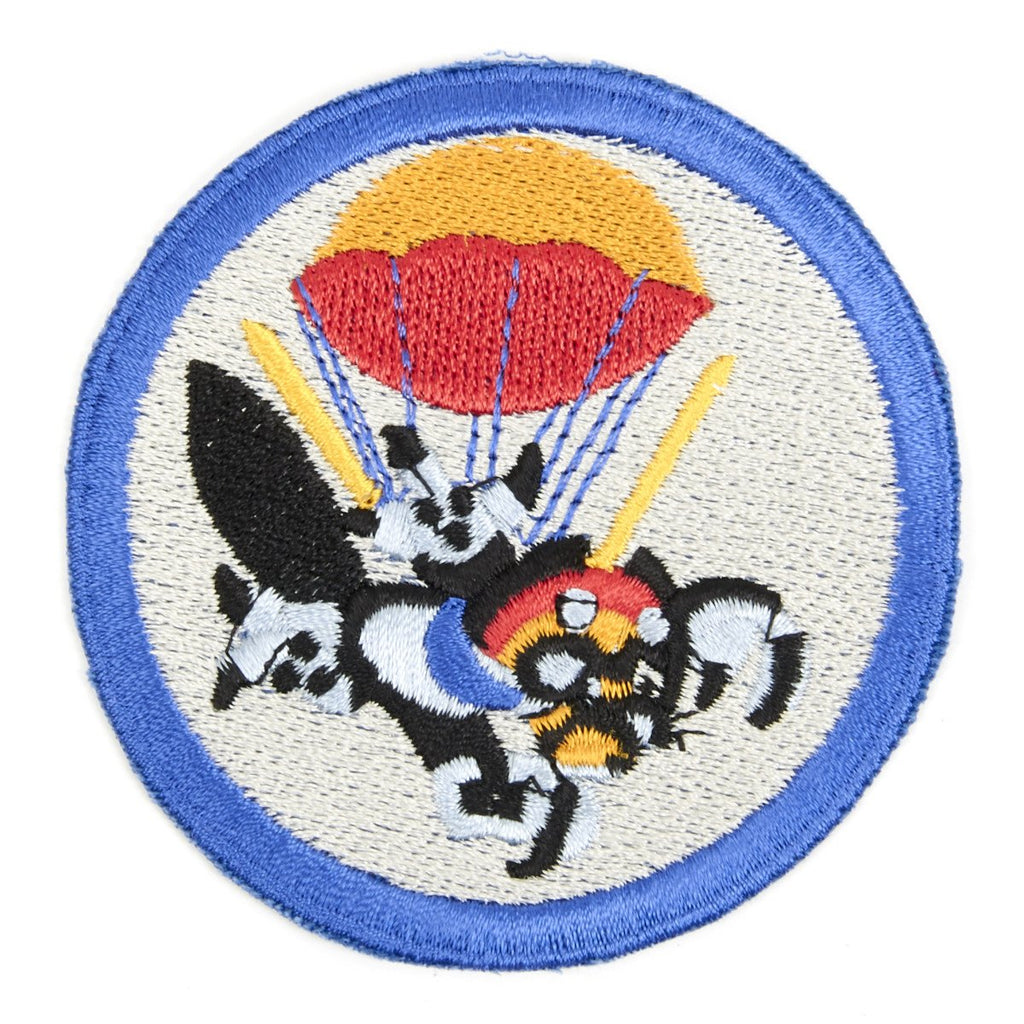-
New Made Item: Top quality embroidery. The 503rd Infantry Regiment, formerly the 503rd Parachute Infantry Regiment (PIR), is an airborne unit in the United States military. It is one of the most decorated units of its kind with a distinguished battlefield record notably in World War II and the Vietnam War. Currently its 1st and 2nd Battalions are active. First battalion is assigned to the 173rd Airborne Brigade Caserma Ederle, while second battalion is out of Caserma Del Din, both located in Vicenza, Italy.
Approximate dimensions:
3" round
World War II:
On 14 February 1942, the 503rd Parachute Infantry Regiment was formed.
The regiment's 1st and 2nd Battalions were formed at Fort Benning, Georgia, from the 503rd and 504th Parachute Battalions, respectively. Unlike many other airborne units, which were deployed in the European Theater of Operations, the 503rd was the first airborne regiment to fight in the Pacific, and as an independent unit.
The unit's first operation was an unopposed landing at Nadzab, in the Markham Valley, New Guinea, on 5 September 1943. Although the landings were unopposed, the troops were later attacked by enemy bombers from the air. The 503rd's deployment helped force the Japanese evacuation of a major military outpost at Lae. During their overland withdrawal, the third battalion of the 503rd had a major skirmish with the Japanese rear guard.
On 34 July 1944, 1st and 3rd Battalions of the 503rd were delivered by parachute to Kamiri Airfield on the island of Noemfoor off the coast of Dutch New Guinea, sustaining significant casualties from the jump. To reduce further casualties, 2nd Battalion was delivered amphibiously. At the Battle of Noemfoor, the 503rd played a major role in the elimination of the Japanese garrison on that island.[2] As a result of his heroic actions during the battle, paratroop Sergeant Ray E. Eubanks was posthumously awarded the Medal of Honor. Airfields constructed on Noemfoor after its capture enabled the advance of Allied troops from New Guinea to the Philippines.
Following a non-combat landing on the island of Leyte in the Philippines, the 503d Regimental Combat Team (RCT) made a major amphibious landing on Mindoro Island in the central Philippines on 15 December 1944. Originally, it was intended for the 503rd to jump on Mindoro, but due to inadequate airstrip facilities on Leyte, an airborne landing was not possible. During the Battle of Mindoro, the 503rd was subjected to intense air and naval actions, at one point being shelled for 25 minutes by a Japanese naval task force. One company of the 503rd RCT engaged in a fierce battle against a company-size Japanese force defending an enemy air raid warning station on the north end of the island. The success of the Mindoro operation enabled the U.S. Army Air Forces to construct and operate air strips and forward air bases to support later landings in the Philippines at Lingayen Gulf, Luzon.
On 16 February 1945, the 503rd RCT jumped on Fortress Corregidor ("the Rock") to liberate that island from occupying Japanese forces. The assault on Corregidor was the most intense combat action in which the 503rd engaged during its existence.[citation needed] Braving intense fire, the paratroopers rushed forward and overcame the heavy blockhouse defenses, dropping explosives into embrasures to kill hidden Japanese gunners. For its successful capture of Corregidor, the unit was awarded a Presidential Unit Citation (US) and received its nickname, "the Rock Regiment" from it. The regimental insignia was designed by PFC Thomas M. McNeill while recuperating from his injuries and dengue fever, hepatitis, and malaria on Mindoro Island, following the battle of Corregidor.
- This product is available for international shipping.
- Eligible for all payments - Visa, Mastercard, Discover, AMEX, Paypal & Sezzle


We Buy Military Antiques
Our team expert buyers travels the world to pay fair prices for entire estate collections to singular items.
START SELLING TODAY




